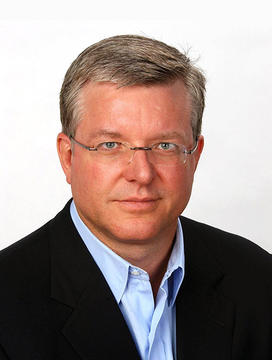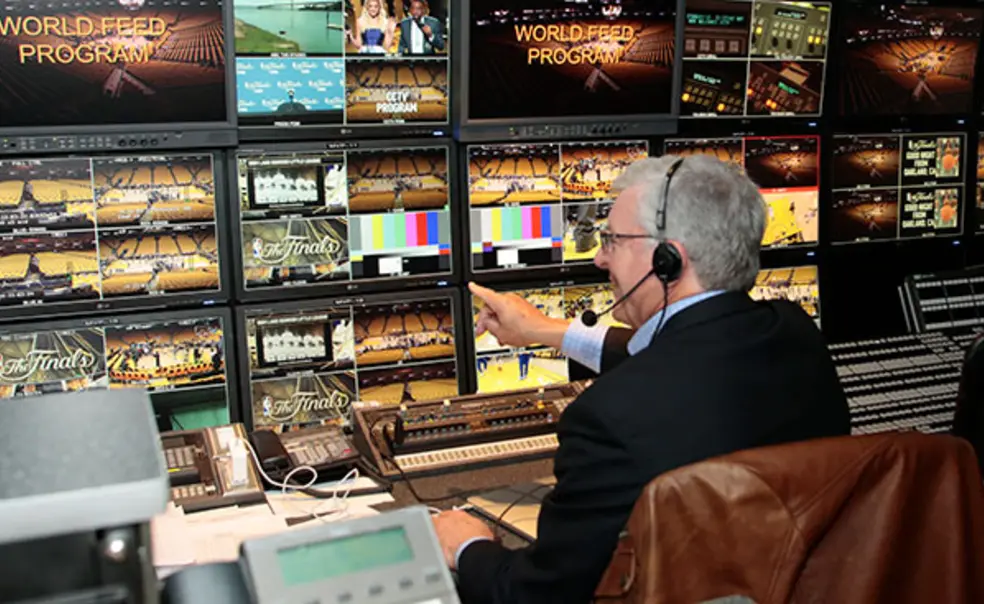Steve Hellmuth ’75 Looks to the Future of Digital Media for the NBA
Steve Hellmuth ’75, executive vice president of media operations and technology for the NBA, is developing new ways to watch basketball games on television, computer, tablet, iPhone, or any other device that can pick up a signal.
“We monitor what’s successful in social media, and it seems that everyone’s looking for new experiences in which they can absorb a lot of information in a short period of time,” Hellmuth said. “In the future, we can combine a player’s shot with computer effects in a way that allows us to augment real time, so you’ll see the player mapped out on the screen before the play is even executed. Or we’ll add fire to the ball as it goes to the rim.”
Hellmuth has already broken through the glass screen by producing the first high-definition 3-D broadcast of a sports event — the 2007 NBA All-Star Game. And he expects more such transmissions when signal-receiving technology catches up to broadcasting know-how.
What else is on the horizon? Maybe virtual reality broadcasts to give viewers a 360-degree picture, letting them watch a play from several angles or look into the stands at, say, a Los Angeles Lakers game and see a beer vendor passing one to Jack Nicholson.
“It’s possible,” Hellmuth said.
Though televised sporting events may add more dazzling effects, Hellmuth said that nothing will ever replace the excitement of physically being in an arena.
“The NBA experience is totally unique,” he said. “Along with the game, they go all out with dancers, contests, mascots, and scoreboard videos. There’s something going on all the time. The NBA is the last refuge of vaudeville.”

“I’ve been working with Golden State management on this project for the past three years,” he says. “Golden State has one of the most engaged fandoms in the NBA — they really project themselves onto the field of play, and we want that feeling to carry over to the new building. I work with architects and acousticians on every characteristic of the lower bowl, including camera placement and fan accessibility. We’re basically constructing a theater that will guarantee lively TV.”
It’s not coincidental that Hellmuth constantly drops theater references. The art history major spent plenty of time producing, directing, acting, photographing, and creating publicity for Theatre Intime. After graduation, he worked as a production assistant on films in New York City while attending film school. An acquaintance introduced him to someone at NBC Sports, where he made short film profiles of athletes.
Today, he stills draws on what he learned at Theatre Intime.
“Sports live television is like theater — it’s real, present, and you can’t stop and start it,” he said. “With theater and live TV, you only get one shot to do it right. Theater is the best training for working in live TV.”












No responses yet